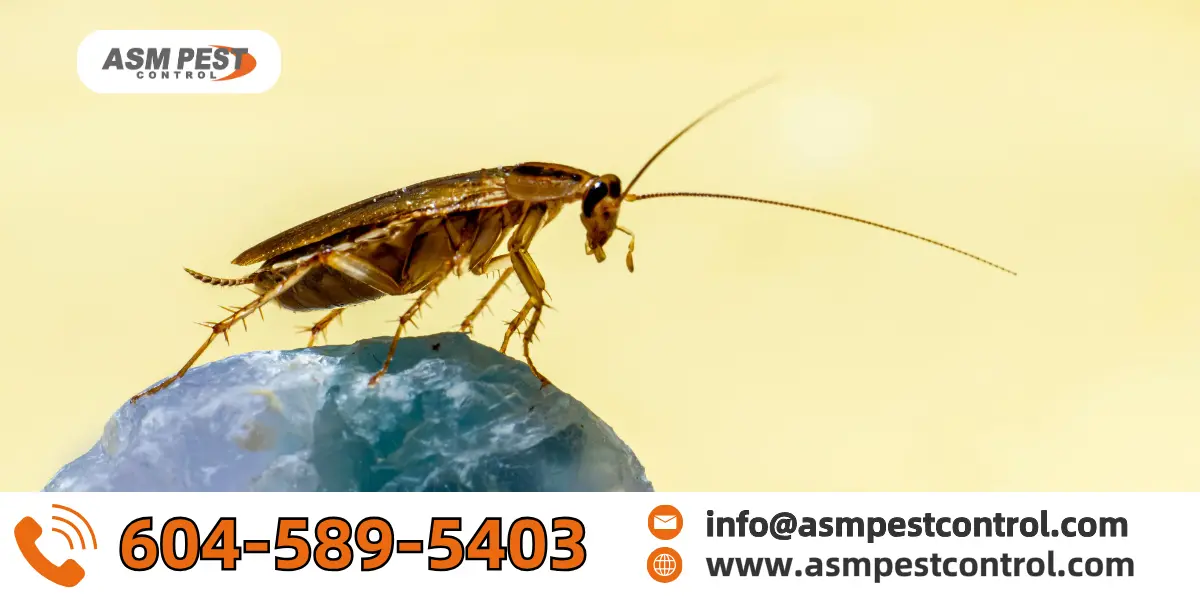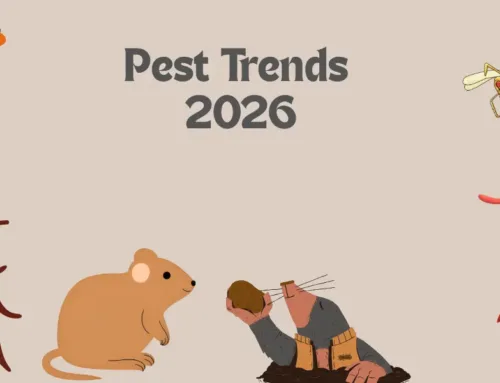The last thing on the mind of most people when they hear of cockroaches is a scurrying nuisance that speedily crawls along the floor. And what in case the same pest should get airborne? It is a scary thought and very realistic. Well, the question then is whether we can fly? Yes, cockroaches fly. The answer is not that easy, whether it is yes or no. Indeed, some species can fly; however, the ability to fly varies greatly according to the kind of cockroach and the conditions.
Learning about cockroach control vancouver flight is necessary not only because it is interesting, but also because owners and tenants of a home want to know how to prevent issues with cockroaches. In managing pests, it is important to know which ones of these insects fly, how they fly, why, and how to ensure they are out of your living space.
Do All Cockroaches Have Wings?
Cockroach species possess wings, although not all use them effectively. The number is small of those who are able or willing flyers. They have some roaches that slide instead of fly, some that do not use their wings much. Take, as an example, male and female German cockroaches are winged insects but poor fliers; they may occasionally glide, but mostly, crawling is their favorite. In the meantime, the smoky-brown and Asian cockroaches are substantially better at flying.
Most of the species of flying cockroaches do not utilize their wings in certain situations. The humidity and heat usually contribute a lot to initiating the flight behavior. These pests normally fly out in fear of being caught or in search of food or good habitats.
Which Cockroach Species Can Fly?
A number of cockroach species can fly. Among them:
- Asian Cockroach: They are generally located in warm climates, particularly the south, and are strong fliers who are usually attracted to lights.
- Smoky-Brown Cockroach: Smoky-Brown cockroach is regarded as highly flighted and therefore more mobile during the night, and will move into a moist area.
- American Cockroach: Though it is not a flier in a conventional sense, it can fly across elevated surfaces to lower ones using its wings.
- Australian Cockroach: This high flyer resembles an American one, hence can also be confused with it, and can usually be spotted around water sources.
- Cuban Cockroach: This is a very capable flier, and it also weighs very little as it is a light insect, and it is filled with green in color.
On the other hand, Oriental cockroaches and German cockroaches are usually grounded, rarely taking to the air, and preferring dark, moist crevices to live and breed.
How Do Cockroaches Fly?
Cockroaches have two pairs of wings. The outer is thick and protective and looks like their body with the same color and texture. These are not wimped to fly on but just covering over the inner pair, which is thinner and more transparent. In readiness to fly, the cockroach control Maple Ridge elevates the outer wings to reveal the inner wings, which perform the entire functions of flying or soaring.
Although cockroaches possess this kind of wing structure, they are not built to fly. When they flee, they tend to do so when they are threatened or when they want to seek cover.
Why Do Some Cockroaches Fly into Homes?
Flying cockroaches tend to choose interior lights. Fall warm, humid nights are when these insects are likely to get into the house through open windows, doors, or torn screens. Once they are in, they can swim towards the food and water, which are among their major driving components.
They mostly remain concealed during the day when detection becomes a problem. When you notice a cockroach flying around, chances are that there are other cockroaches at close range. The ability to fly may enable the roaches to reach different areas that are difficult to reach, such as the high shelves, the attic, and within the walls, which may make efforts to eliminate such roaches hard.
Are Flying Cockroaches Dangerous?
Flying cockroaches may not bite or sting, but they are not by any means harmless. The pests may even have bacteria, viruses, and even parasitic organisms on their bodies, which they can contaminate food and surfaces. Their droppings, sheddings, and saliva may cause allergy and asthma, especially among the young and weak.
Flying will also enable the cockroaches to reach the food storage areas and the kitchen counters too easily, and they are likely to cause contamination. Flying species infestations are more difficult to control because they tend to spread at a faster rate.
How to Prevent Flying Cockroach Infestations
Preventing cockroach infestation, especially those involving flying species, involves a few key strategies:
- Seal Entry Points: Close up cracks, repair window screens, and keep doors shut to prevent entry.
- Eliminate Moisture: Fix leaks and avoid leaving standing water under sinks or in pet bowls.
- Store Food Properly: Keep food in plastic containers and clean up crumbs and spills immediately.
- Use Insect Traps and Baits: These can be useful for both detecting and managing small infestations.
- Regular Cleaning: Pay close attention to kitchens, bathrooms, and other moisture-prone areas.
If you suspect an infestation and especially notice flying roaches, taking immediate action is essential to stop their spread.
FAQs About Flying Cockroaches
- Can cockroaches fly in cold weather?
Most flying cockroach species are active in warm, humid environments. Cold weather typically slows them down, and they are unlikely to fly in low temperatures. - Are flying cockroaches a sign of a serious infestation?
Yes. Seeing flying cockroaches often indicates that the population has grown large enough that are actively seeking new food sources or nesting sites. - Can all cockroaches glide?
Not all. While many can glide short distances, only a few species, like the smoky-brown or Asian cockroach, have the capability for true flight. - How long can flying cockroaches live indoors?
Depending on the species and indoor conditions, some cockroaches can survive over a year, especially if they have steady access to food and water.
Final Thoughts:
So, can cockroaches fly? Yes, some can, and those that do may become an even greater nuisance than their crawling counterparts. Flight allows them to spread more quickly and evade typical traps or cleaning routines. Whether they fly or crawl, cockroaches are unwelcome guests that require prompt attention. By understanding their capabilities and behavior, you can better protect your home and family from these persistent pests. And do consider ASM Pest Control for professional and reliable cockroach removal services






